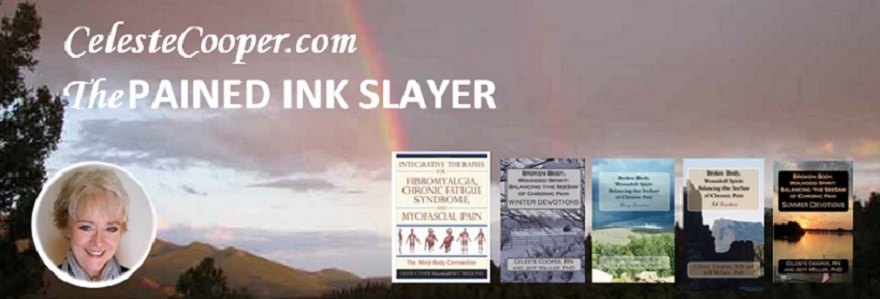This is literally, at
least, a million-dollar question, are
fibromyalgia researchers on a common path or are they like "Two mice in a maze
of indecision?” Here is my own non-award winning story.
Two mice in a maze of indecision. The first mouse, Must Mooli, is
frantically navigating the maze because she knows if she finds the bell at the exit and thrashes it's pull back and forth cash will drop like confetti. Must Mooli is eager to receive the reward for the research she does. Shouldn't she be? After all, she needs the money to feed her family. Her moral duty is influenced by the basic needs of those she loves. But, she has competition, Bamboozled Barley, mouse number
two. He is navigating the same maze using a different strategy because he wants to pick up studies along the way, studies he can replicate. You see, Bamboozled
Barley is convinced that he can be an award-winning researcher heralded for his scientific breakthrough, discovering a biological test or even a cure for fibromyalgia. But, doesn’t he need to ring that bell too? Sure he does, but he believes he can accomplish more with his strategy. His bell may not be the same one Must Molli seeks, it could be in a different location or in another maze all together. So, he stumbles from side to side, following every path, seeking what he needs to bring him the recognition he desperately wants. Who do you think makes it in the end? Does it matter? Your about to find out.
Where Is the Bell?
From where does the money come? Will it miraculously fall from the sky? And, what research proposal, and by who, is it granted? Must Mooli and Bamboozled Barley know that maze only too well. We don't know their process, but we can speculate on who provides funding. It either comes from some private entity for some type of secondary gain, directly or indirectly, or from a public funding source that our tax dollars support. We would hope that public funding has one goal, to find a cause, treatment, or cure for diseases that affect people. One such entity here in the U.S. is the National Institute of Health. Yet, even public entities are fraught with controversy. Cort
Johnson at Health Rising gives us a glimpse of what can happen.
Just like Must Molli and Bamboozled Barley, we are all motivated by different things, and as our bells peal to a different melody, so do opportunities.
The Facts about Replication
Bamboozled Barley knows the value of study replication and so does Kim Penix, blogger at Grace is Sufficient. It was after reading
about her experience as a fibromyalgia study participant that I was inspired to
write this blog. She had this to say about the process and the value of study replication.
“...The process is even more complicated because medical journal publications tend to only print the new and exciting finds. But unless those studies can be replicated repeatedly and consistently, you can’t be 100% positive. What happens then is when another study is performed, and they get different results, you may never read about it in a journal because it isn’t new and exciting. This leaves doctors without the continued information...”
So, how do studies get published in reputable journals? The study is written up and all the important criteria are examined by peers in that field of study. For instance, we would expect the study Kim participated in to be published in a respected rheumatology journal like Arthritis and Rheumatism or Arthritis Care and Research.
What is Peer Review?
Peer review is a rigorous process in which scholarly articles, in this case studies, are evaluated by the scientist's peers. They look at content, validity, methods of research, and so on. Usually it consists of more than one reviewer and includes editors of the journal who either accept or reject the article for publication. I wonder if there is peer bias (who you know), because some published studies are certainly suspect. But, just like Must Mooli and Bamboozled Barley, motivation for publishing or rejecting a study is often influenced by what will improve circulation of the journal. We wish it weren't so for the reasons Kim describes, but it is the truth in our world as we know it today.
What is Peer Review?
Peer review is a rigorous process in which scholarly articles, in this case studies, are evaluated by the scientist's peers. They look at content, validity, methods of research, and so on. Usually it consists of more than one reviewer and includes editors of the journal who either accept or reject the article for publication. I wonder if there is peer bias (who you know), because some published studies are certainly suspect. But, just like Must Mooli and Bamboozled Barley, motivation for publishing or rejecting a study is often influenced by what will improve circulation of the journal. We wish it weren't so for the reasons Kim describes, but it is the truth in our world as we know it today.
The Diagnostic Criteria and Participant Screening
One would think all scientists would use the same criteria for screening fibromyalgia participants, but that's not what happens. Scientists must reveal how they identified their participants, but the criteria is not consistent. And, sometimes co-occurring conditions are not ruled out, which can vastly change the outcome, or add so many variables to the study that the construct is damaged.
This is of great concern to me because of the inconsistencies in the newer criteria. I have expressed by concerned to the NIH and the American College of Rheumatology (ACR) as far back as 2010. The criteria must be prudently applied, but first we need criteria that the experts can agree to use. For instance, “The Preliminary Proposed (Wolfe, et al. 2010) and Modified Criteria (Wolfe, et al.2011) is NOT approved by the ACR (a response letter to me from the ACR), and rheumatologists around the world have been critical of it.
This is of great concern to me because of the inconsistencies in the newer criteria. I have expressed by concerned to the NIH and the American College of Rheumatology (ACR) as far back as 2010. The criteria must be prudently applied, but first we need criteria that the experts can agree to use. For instance, “The Preliminary Proposed (Wolfe, et al. 2010) and Modified Criteria (Wolfe, et al.2011) is NOT approved by the ACR (a response letter to me from the ACR), and rheumatologists around the world have been critical of it.
It's no secret that I favor Dr. Robert Bennett, et. al. criteria
and you can read more about it on my website, Alternative Diagnostic Criteria for Fibromyalgia. The ACR, the CDC, and the NIH understand the significance of fibromyalgia occurring with other painful
disorders, as Dr. Bennett suggests. This is contrary to Dr. Wolfe, et al. (referenced previously). Are you starting to get the picture? Our researchers need criteria they can depend on for all the reasons I listed in my letters to the NIH and the ACR. And yet, six years later not much has changed.
Is It Possible to Collaborate?
I wish the researchers could find a way to collaborate. I wrote a letter to a couple of them, Dear Dr Albrecht Dr Behm Dr Ge Hy and Dr Orlander –Are These Studies related, because I wanted to see if I was interpreting their research correctly and if they saw any similarities on they could use to collaborate. Unfortunately, I did not get a response.
Because of technology, we can collect very important data, but some of our privacy laws prevent that. Sure, it's okay for Google to know our every desire; it's okay for foreign offshore health insurance billing companies to have every identifier we give our provider, which are NOT subject to HIPPA privacy laws. It's okay the very laws created to protect our health records are keeping scientists from valuable information. No it is not!
So, I must conclude, it's possible that my little story about Must Mooli and Bamboozled Barley could be more fact than fiction. Resources, physical location of scientists, and motivation are significant factors. But, I am hopeful. Make no mistake, there are people working to find a way to collect data without breaking laws. For every obstacle there is opportunity. Feel free to download the PAINS policy brief #7 from my website.
So, I must conclude, it's possible that my little story about Must Mooli and Bamboozled Barley could be more fact than fiction. Resources, physical location of scientists, and motivation are significant factors. But, I am hopeful. Make no mistake, there are people working to find a way to collect data without breaking laws. For every obstacle there is opportunity. Feel free to download the PAINS policy brief #7 from my website.
In a separate blog, I will let you know about my search for replicated studies. And I hope to get the chance to share more with you about PCORI, which is ALL about collaboration and involving the patient. Never give up hope, the past is how we learn and the future is full of possibilities.
~ •
~ • ~ • ~ • ~ • ~
"Adversity is only an obstacle if we fail to see
opportunity."
Celeste Cooper, RN












No comments:
Post a Comment